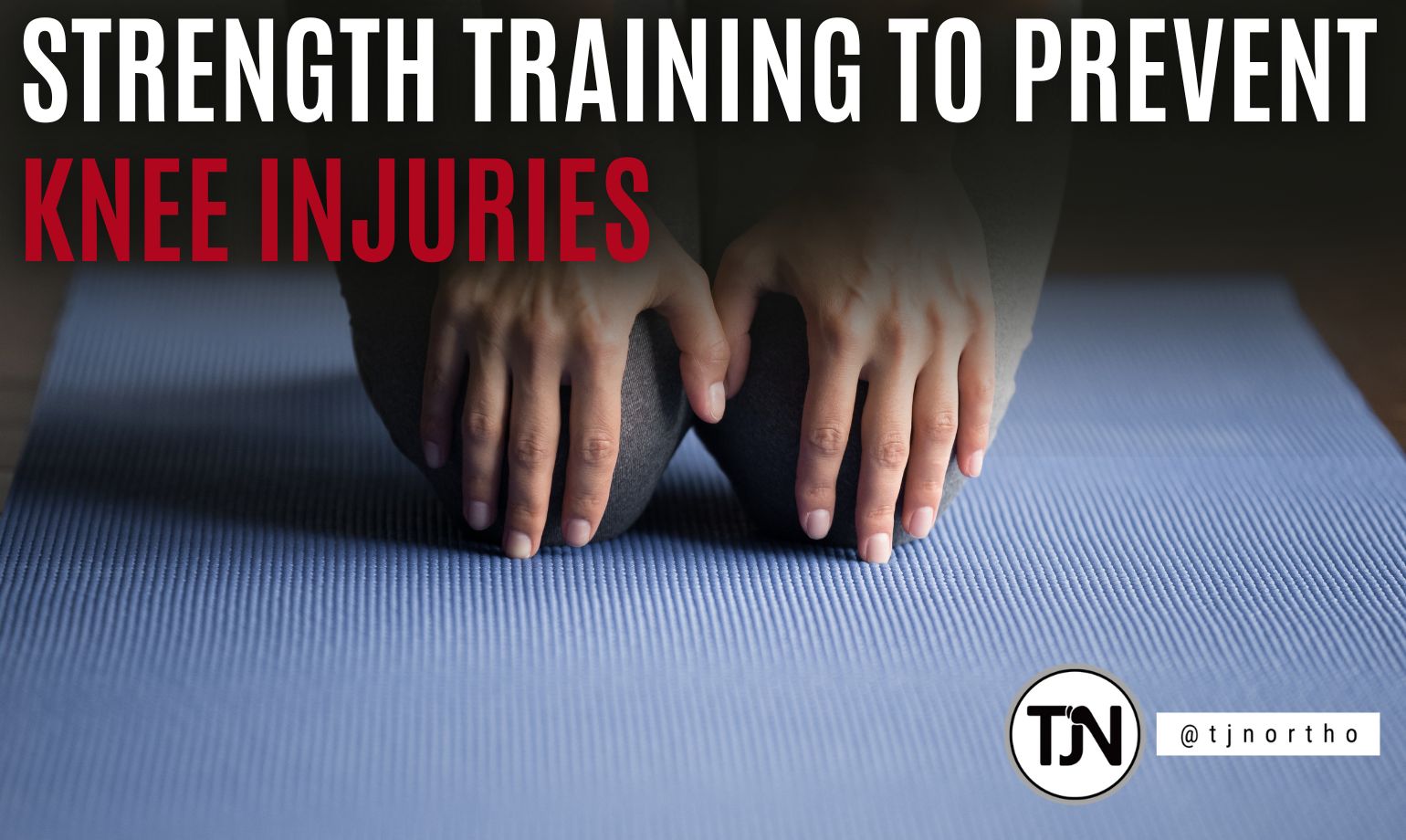Knee injuries are not just a concern for professional athletes; they can strike individuals of all ages and activity levels. At some time in their lives, knee problems will afflict between 15% and 20% of all men and about 20% of all women. In sports, knee injuries account for between 40% and 50% of all injuries.
In a way, it’s no wonder. We demand a lot of our knees from the moment we start to crawl. Our knees must bear one-and-a-half times our body weight with every step and even more when running, jumping, or climbing stairs. There aren’t many mobile activities that don’t involve our knees. So, how do we avoid injuring them? If you are active, you have to accept that you may not be able to prevent every injury, but there is something you can do to minimize the risk: strength training.
Strength training works because, although your knee joints are made up of bones, ligaments, tendons, and cartilage, many muscles in your thighs and calf support the joint. When you strengthen and tone the muscles around your knees, those muscles can bear some of the pressure you place on your knees, relieving your joints from doing all the work.
Let’s look at what exercises are most effective, when to do them, and how to use them to prevent knee injuries.
Who Should Do These Exercises?
Regarding who is most at risk of a severe knee injury, you can focus on athletes between 12 and 25, the group that usually suffers the most knee injuries. However, anyone who leads an active life should take heed, whether you are a weekend warrior, a dedicated amateur, or just someone who loves to dance. The right knee strengthening exercise can significantly reduce your risk of knee injuries, including the dreaded anterior cruciate ligament (ACL) tear.
Prevention is always better than a cure, especially when it comes to knee problems. A serious injury can sideline you for weeks or even months, and although medical science has made tremendous advances in remedying knee problems, your best route is to avoid them. So, consider incorporating some of these exercises into your fitness routine regardless of your age or your perceived risk of a knee injury.
What Exercises Should You Do?
An exercise program that can help fortify your knees will have several components:
- Dynamic Stretching: Before diving into intense exercises, preparing your muscles is essential. Dynamic stretching does just that. For the legs, walking quadriceps and hamstring stretches or hamstring/gluteal stretches are excellent examples of stretches that can enhance flexibility and improve blood flow to your muscles every time you begin and end an exercise session.
- Running Drills: Athletic movements demand agility and stability. Running drills, which include sprints, bounding, backward jogging, and skipping, can help you build these skills. Repeated short sprints, for instance, can boost knee stability, a crucial element in injury prevention. The advantage of running and jumping exercises for muscle building is that it does not include twisting and turning motions that can stress the ligaments and tendons of your knees. Be sure to do these exercises on soft ground like a track or on a dirt or grass path rather than hard pavement; impacts on hard surfaces can stress the bones and joints.
- Strength Training: Exercises like squats, Nordic hamstring curls, walking lunges, and single-leg squats are especially effective for strengthening thigh muscles. Squats, in particular, are an excellent choice for developing leg strength and stability.
- Core and Trunk Exercises: A strong core is vital for overall body stability, leading to better knee support. Planks, side planks, and bridges strengthen your core and trunk muscles. Don’t underestimate the impact of a solid core on your knee health.
- Plyometric Exercises: Plyometrics involve explosive movements that mimic real-world sports activities. These include double-leg jumping forward and back, single-leg jumping, and jumping side to side. Adding plyometrics to your training program can improve your ability to control and stabilize your knees during dynamic movements. Again, do these exercises on a forgiving surface.
Many of these exercises will also improve your ankles’ strength and balance.
Consistency is Key
Starting ahead of time and staying consistent are critical factors in preventing knee injuries. If you are an athlete, begin your exercise program in the preseason, well before the season’s games or matches commence. If you don’t maintain a consistent exercise regimen in the off-season, start slowly and ramp up so that you don’t overstress your muscles or joints. The last thing you want is to cause the injuries you are trying to avoid! Keep up a consistent routine during the season, even if you are doing workouts more directly related to your chosen sport. Injury prevention is an ongoing commitment.
Aim to perform these exercises multiple times per week. Consistently sticking to these exercises is your best defense against knee injuries. Moreover, you don’t have to go it alone. Work with a partner or teammate. Your coaches, medical staff, parents, and fellow athletes can provide additional motivation and guidance.
Despite the prevalence of knee injuries, they are not inevitable, and you can take steps to prevent them. In addition to exercises, you can also wear knee supports or braces and compression wear to keep your muscles warm.
At TJN Ortho, we specialize in addressing knee and other sports injuries. As an athlete himself, Dr. Tchejeyan knows how important it is to athletes to recover from injuries so that they can return to their sports and perform at their peak. When addressing knee health, your best route is to take a proactive approach, so begin some strength training today to protect your knees. If you have knee pain or are concerned that you may have damaged any part of your knees, contact TJN Ortho and schedule an appointment today.




